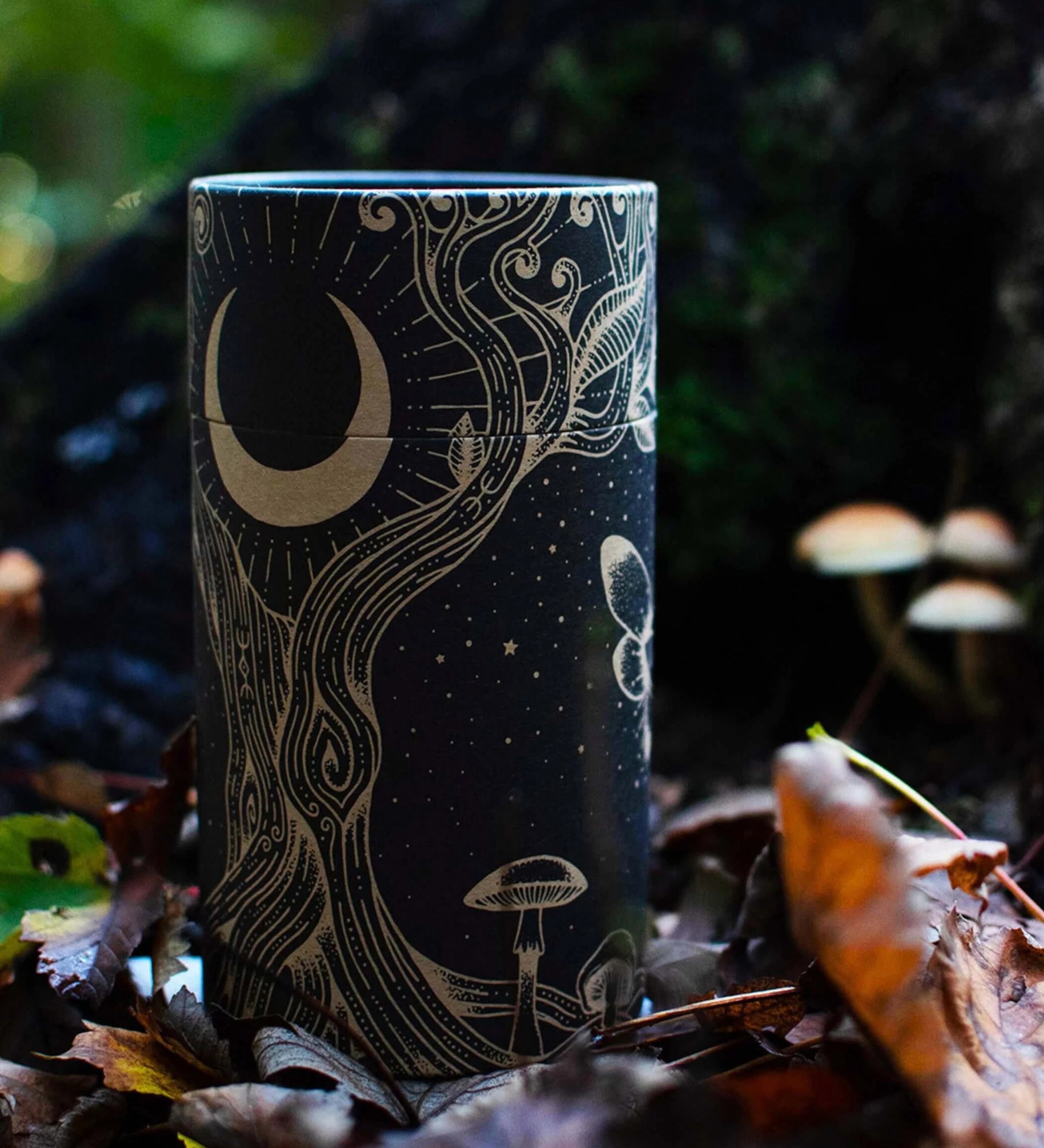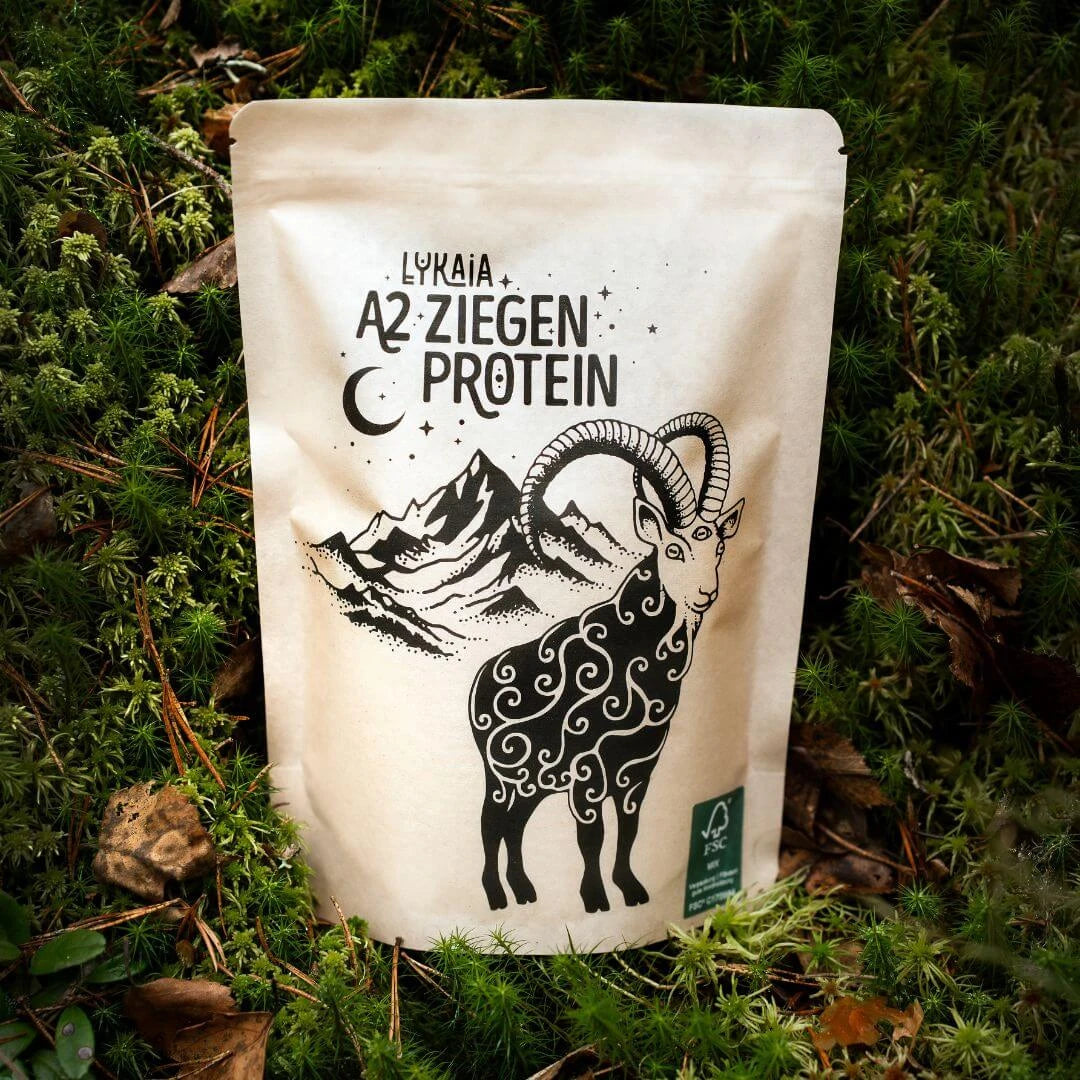5 effects of chaga

Your little Chaga guide – from the harvest to the Chaga elixir
The use of chaga dates back to the 12th century of Russian folk medicine (and probably further). It is used as an all-round remedy for almost everything. Because of the betulinic acid contained in chaga, it is primarily valued as a remedy for cancer and gastrointestinal problems . The healing powers and effects of Chaga are so impressive that we have dedicated a product to it.
Our Chaga Elixir. In this article you will find out why we chose an elixir, where chaga comes from and what its top 5 effects are. We have created a small Chaga guide for you here and if you invest 5 to 10 minutes of your time, you will be equipped with excellent Chaga basics knowledge.
The first thing we are asked at trade fairs when visitors discover the small dark Chaga chunks on our table is the following question:
Where does chaga come from?
A legitimate question, because you don't see Chaga every day. The Chaga mushroom prefers cooler climates and grows primarily on birch trees. It is often found in Scandinavia or Siberia. By the way, our Lykaia Chaga comes from wild collections in Finland.
Breeding Chaga is difficult or even impossible. We were lucky that we were even able to harvest a Chaga in our forests in North Rhine-Westphalia. That was really a lucky break, because finding chaga is not easy. This requires the eye of a connoisseur, as Chaga initially looks no different than the typical dark ossifications that you often see on the light-colored trunks of birch trees. So you have to have seen one or two Chaga in order to be able to distinguish it from such ossifications straight away.
At the latest when it is harvested, it becomes clear whether it is actually Chaga, because a real Chaga mushroom shimmers gold-red inside. However, the harvest is not done quite so quickly. A small ax is usually necessary to separate the chaga from the birch. Here you can see a video of our Chaga harvest in the forests near Leiberg:
How do you process freshly harvested chaga?
Let's assume that you found a beautiful specimen on a local birch tree and proudly took it home with you. The first thing you should do now is cut the chaga into smaller chunks and spread it out on a rack to dry for a few days. You then have the following options:
- You can boil the Chaga bucks and drink them as a kind of tea.
- You can process the chunks into a “double-extracted” tincture (which means boiling them in water and letting them steep in alcohol for a few days so that all the active ingredients are released).
- You can dry your double extracted tincture from step 2 again. You will then receive a very fine Chaga powder extract, which you can top up with hot water if necessary, because all of the active ingredients have been extracted and dissolved in step 2. This is basically exactly what we call “ Chaga Elixir ” in our shop.

Well, let's say you have decided on one of the options. So why should you take Chaga?
Chaga has many effects and, along with Reishi, is one of the most well-studied medicinal mushrooms and has the most studies on it. So that this remains a small Chaga guide and doesn't go beyond the scope, we have limited it to the top 5 effects and applications that have been best researched regarding Chaga.
1. Chaga as a substitute for coffee
Because of its invigorating effect and its excellent solubility in hot water, chaga is also often drunk as a substitute for coffee in Finland. During the Second World War, people in Finland didn't really have a choice because coffee was in short supply there at the time. Chaga, which was already used as a panacea and also for medical purposes, has since become a popular and accepted coffee substitute.
But why does Chaga wake you up when it's caffeine-free?
A cup of double-extracted chaga has about 53 times as many antioxidants as a handful of blueberries. And even blueberries are not exactly low in antioxidants compared to other foods. Chaga is one of the foods richest in antioxidants in the world. Here's a comparison to other well-known antioxidant suppliers:

Why are antioxidants so valuable?
They help us to cope better with everyday stress and negative environmental influences by binding to free radicals in our body and rendering them harmless. You can read about it in detail here . They also have an invigorating and awakening effect. It's not necessarily comparable to caffeine, but it feels gentler and longer-lasting. At least that's how we would describe it based on our own and customer experiences.
2. Chaga and intestines
There are now some good studies that indicate that Chaga has antiviral and anti-inflammatory effects throughout the gastrointestinal tract. In particular, the betulinic acid (“Betula” from birch) contained in chaga has an anti-inflammatory effect in the intestines. Betulinic acid is only absorbed by wild Chaga that develops on birch trees over several years.
In addition, Chaga promotes the reproduction and settlement of beneficial intestinal bacteria and thus creates a balance in the microbiome. Chaga therefore also has a specific use as a remedy for gastrointestinal diseases and has even been used preventatively and acutely for stomach and intestinal cancer for centuries (probably even thousands of years).
3. Chaga and skin
Have you asked yourself while watching our harvest video why chaga is so black? The black color is due to the melanin contained in Chaga. Among other things, melanin is also responsible for the pigmentation of the skin. The more melanin is stored in the skin, the darker it appears to us. Melanin not only has optical properties, but also skin-protecting properties. Darker skin (= more melanin) is therefore better protected against sunlight than lighter skin.
There are therefore many cosmetic products that contain chaga, but the melanin can also be partially absorbed via the gastrointestinal tract and, if necessary, serves the body as an important protection against free radicals and as a building block for healthy skin and hair. It is not for nothing that in Russia Chaga is associated with “beautiful skin” and “strong hair”.
4. Chaga for autoimmune diseases
Since Chaga has a general anti-inflammatory effect, it can also be used therapeutically for autoimmune diseases, especially those that arise from an imbalance or disruption of the intestinal flora. The polysaccharides in chaga can restore the balance between the so-called T lymphocytes (group of white blood cells) and thus contribute to an anti-inflammatory effect.
5. Chaga and histamine
Chaga has a proven histamine-inhibiting effect. This is mainly due to its positive effect on the stomach and intestinal tract (see point 2) and betulinic acid. In addition, the inotodiol contained in chaga appears to suppress the production of so-called mast cells, which release histamine upon contact with an allergen. A histamine reaction is thereby inhibited or weakened.
That was a whole lot of effects and yet we still haven't reached the end of what Chaga can do. But let's leave it at this for now and summarize again:
Chaga works above all:
- invigorating and strengthening (through antioxidants)
- anti-inflammatory and antiviral (betulinic acid)
- Supports the immune system and intestines (polysaccharides)

How should you take chaga to get the full benefits?
There is no general answer to this. But as with almost all functional mushrooms or medicinal mushrooms, we are a fan of integrating them into everyday life in the long term, but in smaller doses. Studies on chaga and histamine, for example, have been done with participants who drank a cup of chaga every day. After about 6 to 8 months, these participants were able to eat almost any food containing histamine again.
Other studies were conducted with participants who consumed chaga powder in capsule form, and this also appears to have had an effect. How you ultimately do it is up to you. However, our recommendation is to make sure to choose a double-extracted Chaga product or an extract from the whole “fruit body” to ensure that it contains as many active ingredients as possible.
And finally:
Does Chaga have side effects or interactions with supplements?
We are not aware of any specific interactions with certain NEMs, or should be researched very specifically for the respective case of intake. In general, all medicinal mushrooms have an adaptogenic, i.e. balancing, effect. Chaga is a very potent and nutrient-rich natural remedy.
As with everything, our recommendation is to start with small amounts when introducing a new food like chaga and generally keep your daily dosage in moderation. Dose and quantity information can be found on most products. It is always wise to take this as a guide first, as the manufacturer has usually given this information some thought.
We do not recommend consuming chaga for pregnant or breastfeeding women unless they have had previous experience with it. The high amounts of antioxidants and oxalic acid contained in chaga may be too stimulating for the body.
Feel free to convince yourself of our Chaga Elixir .
Did you like the article?
Feel free to leave us a comment or ask us your questions. We look forward to receiving feedback from you!
Sources:
1. Antioxidants:
https://iubmb.onlinelibrary.wiley.com/doi/10.1002/biof.552210120
https://pubmed.ncbi.nlm.nih.gov/15630179/
2. Antiviral, Anti-inflammatory:
https://www.mdpi.com/2072-6643/12/9/2573
https://link.springer.com/chapter/10.1007/978-3-319-12847-4_11
3. Gut Health:
https://www.ncbi.nlm.nih.gov/pmc/articles/PMC5618583/
4. Therapy for autoimmune diseases
https://www.ncbi.nlm.nih.gov/pmc/articles/PMC3774877/
https://www.ncbi.nlm.nih.gov/pmc/articles/PMC1160565/
5. Histamine-inhibiting effect
https://www.ncbi.nlm.nih.gov/pmc/articles/PMC6706056/
https://pubmed.ncbi.nlm.nih.gov/29175507/
0 comments







